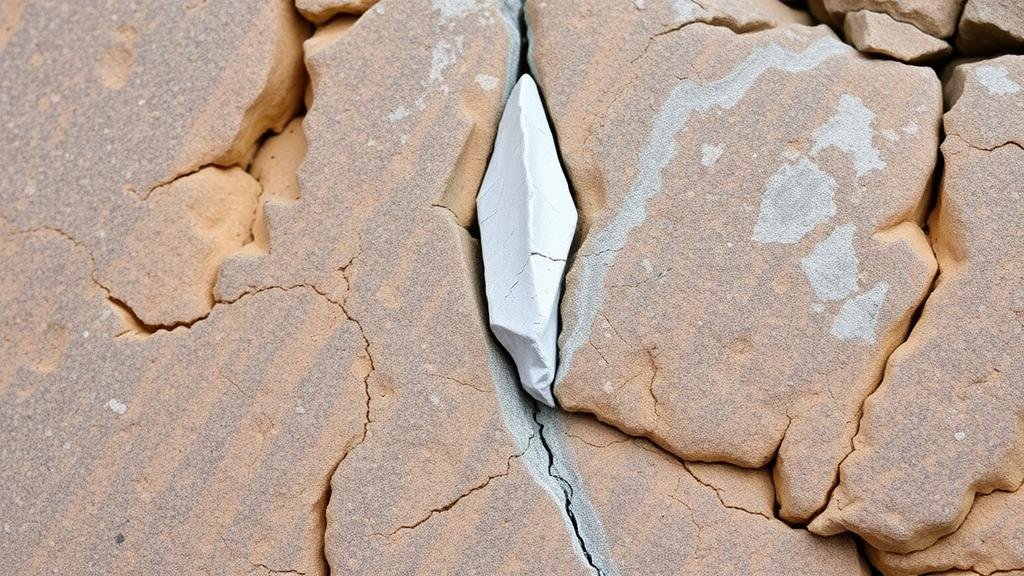Identifying Weathered Rock Formations That May Hold Silver Veins
Identifying Weathered Rock Formations That May Hold Silver Veins
Exploring and identifying weathered rock formations that may contain silver veins is a vital skill in geology and mining. Silver, a precious metal known for its conductive properties, has been extensively mined across the globe. Understanding how to identify the specific rock formations that may host these valuable minerals can greatly enhance mining success rates. This article provides a comprehensive overview of the characteristics of weathered rock formations conducive to silver veins, supported by case studies and practical applications.
The Importance of Weathering in Mineral Formation
Weathering processes play a crucial role in the formation of mineral veins, including those containing silver. Weathering can be physical, chemical, or biological, each altering rock structure and composition over time.
- Physical Weathering: Mechanical breakdown without chemical change–factors include freeze-thaw cycles, erosion, and thermal expansion.
- Chemical Weathering: The breakdown of minerals through chemical reactions, such as hydration and oxidation, often leading to the dissolution of certain elements.
- Biological Weathering: Involvement of living organisms, such as lichens or plant roots, that can enhance weathering processes.
The interaction of these processes contributes to the alteration of rocks, enhancing the potential for mineral deposition, including silver.
Characteristics of Weathered Rock Formations
Identifying rock formations that may hold silver veins typically requires a keen eye for specific geological markers. Some characteristics to look for include:
- Coloration: Weathered rocks may exhibit distinct color changes due to oxidation, hydration, or the deposition of secondary minerals like cerargyrite, which may indicate the presence of silver.
- Texture: Look for a porous or crumbly texture often found in oxidized zone rocks, facilitating silver deposition.
- Mineral Association: Silver is commonly found in association with lead, zinc, arsenic, and gold. presence of these minerals can indicate potential silver vein deposits.
For example, in the Belcher Islands, Canada, silver deposits are typically associated with weathered basalt formations that reveal telltale signs of oxidation and alteration.
Case Studies: Successful Identification of Silver Veins
There are numerous field studies that highlight the successful identification of weathered rock formations yielding silver. One notable case is the Comstock Lode in Nevada. Here, miners identified rich silver veins among leached limestone formations that had undergone significant weathering, revealing high-grade silver deposits. By targeting these weathered zones, the Comstock Lode became one of the richest silver mining districts in the United States.
Another example is the Silverton area in Colorado, where hydrothermal activity led to the formation of significant silver veins within weathered granite and metamorphic rocks. The miners focused on specific weathered zones, which facilitated the extraction of considerable silver ore.
Practical Applications for Prospectors
Prospectors looking to identify weathered rock formations that may hold silver veins can follow these actionable steps:
- Conduct Field Surveys: Regularly inspect geological maps and conduct field surveys of areas known for historical silver mining.
- Sample Analysis: Collect rock samples for laboratory analysis to test for the presence of silver and associated minerals.
- Use Geophysical Methods: Employ geophysical methods such as resistivity and magnetic surveys to locate potential areas with altered rock formations.
By implementing these strategies, prospectors can enhance their potential for discovering valuable silver veins effectively.
Conclusion
Identifying weathered rock formations that may contain silver veins is a complex yet rewarding endeavor. Understanding the processes of weathering, recognizing characteristic markers, studying successful case histories, and applying practical prospecting methods can significantly enhance success rates in mineral exploration. With this knowledge, geologists and prospectors can navigate the intricate landscape of silver mining more effectively.



